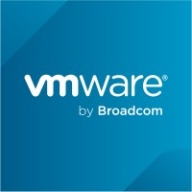

Talend Open Studio and Spring Cloud Data Flow compete in the data integration and processing category. Talend Open Studio might have the upper hand in pricing and support, while Spring Cloud Data Flow could be favored for its advanced features.
Features: Talend Open Studio is known for its drag-and-drop functionality, robust ETL capabilities, and an extensive connector list that supports data integration tasks with flexibility and customization. Spring Cloud Data Flow provides a straightforward programming model, exceptional integration capabilities, and allows rapid microservices deployment and management, handling batch processing efficiently with a cloud-native design.
Room for Improvement: Talend Open Studio could align its enterprise version with the open-source version and address inter-version compatibility, alongside enhancing performance and UI, as well as improving documentation and training resources. Spring Cloud Data Flow needs better documentation clarity, a more intuitive interface, and improved support for Kubernetes configurations.
Ease of Deployment and Customer Service: Talend Open Studio offers deployment across on-premises, private, public, and hybrid clouds with technical support via a portal and forums, although support quality varies. Spring Cloud Data Flow is usually deployed on-premises or in private clouds, with community forums and variable customer service feedback.
Pricing and ROI: Talend Open Studio provides a free community version and a licensed version for additional features, offering strong ROI through reduced development time. Spring Cloud Data Flow, open-source with paid support options, is valued for good ROI in data warehousing projects as specific pricing is not widely known.
| Product | Market Share (%) |
|---|---|
| Talend Open Studio | 2.8% |
| Spring Cloud Data Flow | 1.2% |
| Other | 96.0% |


| Company Size | Count |
|---|---|
| Small Business | 3 |
| Midsize Enterprise | 1 |
| Large Enterprise | 5 |
| Company Size | Count |
|---|---|
| Small Business | 22 |
| Midsize Enterprise | 13 |
| Large Enterprise | 18 |
Spring Cloud Data Flow is a toolkit for building data integration and real-time data processing pipelines.
Pipelines consist of Spring Boot apps, built using the Spring Cloud Stream or Spring Cloud Task microservice frameworks. This makes Spring Cloud Data Flow suitable for a range of data processing use cases, from import/export to event streaming and predictive analytics. Use Spring Cloud Data Flow to connect your Enterprise to the Internet of Anything—mobile devices, sensors, wearables, automobiles, and more.
Talend Open Studio is a free, open source ETL tool for data integration and Big Data. The solution enables you to extract diverse datasets and normalize and transform them into a consistent format which can be loaded into a number of third-party databases and applications.
Talend Open Studio Features
Talend Open Studio has many valuable key features. Some of the most useful ones include:
Talend Open Studio Benefits
There are several benefits to implementing Talend Open Studio. Some of the biggest advantages the solution offers include:
Reviews from Real Users
Below are some reviews and helpful feedback written by PeerSpot users currently using the Talend Open Studio solution.
Elio B., Data Integration Specialist/CTO at Asset messages, says, "The solution has a good balance between automated items and the ability for a developer to integrate and extend what he needs. Other competing tools do not offer the same grade of flexibility when you need to go beyond what is provided by the tool. Talend, on the other hand, allows you to expand very easily."
A Practice Head, Analytics at a tech services company mentions, “The data integration aspect of the solution is excellent. The product's data preparation features are very good. There's very useful data stewardship within the product. From a technical standpoint, the solution itself is pretty good. There are very good pre-built connectors in Talend, which is good for many clients or businesses, as, in most cases, companies are dealing with multiple data sources from multiple technologies. That is where a tool like Talend is extremely helpful.”
Prerna T., Senior System Executive at a tech services company, comments, “The best thing I have found with Talend Open Studio is their major support for the lookups. With Salesforce, when we want to relate our child objects to their parent object, we need to create them via IDs. Then the upsert operation, which will allow you to relate a child object to the event, will have an external ID. That is the best thing which keeps it very sorted. I like that.”
An Implementation Specialist, Individual Contributor at a computer software company, states, “I can connect with different databases such as Oracle Database or SQL Server. It allows you to extract the data from one database to another. I can structure the data by filtering and mapping the fields.” He also adds, “It is very user-friendly. You need to know the basics of SQL development or SQL queries, and you can use this tool.”
PeerSpot user Badrakh V., Information System Architect at Astvision, explains, "The most valuable features are the ETL tools."
We monitor all Data Integration reviews to prevent fraudulent reviews and keep review quality high. We do not post reviews by company employees or direct competitors. We validate each review for authenticity via cross-reference with LinkedIn, and personal follow-up with the reviewer when necessary.